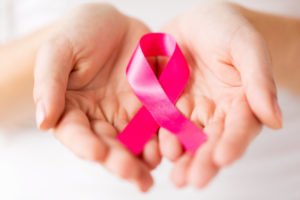Breast Cancer Life Insurance Underwriting

I wrote this post about 10 years ago. That was just a few years after my mother went through diagnosis and treatment for breast cancer and it gave me a whole new awareness of the aspects like stage and grade and treatment options. I hope updating the information (and correcting some typos) will be useful to you. All the best.
Life Insurance After Surviving Breast Cancer
For anyone who might have followed that series of posts that lasted about a year, my mom was 85 at the time and was really in no need of life insurance. It was the detection, pathology, and treatment that gave me relevant factors to address what a similar case in a younger woman would mean from a life insurance standpoint. As with all cancer life insurance, early detection is key to a positive health outcome, and yes, a better chance at good life insurance rates.
Stage And Grade Affect On Life Insurance
The most critical factor, post-cancer, in determining when a woman can get life insurance and how much it will cost is the staging and grading of the cancer. The best situation of all is DCIS, ductal carcinoma in situ. It is a stage 0. With DCIS all of the cancer is encapsulated within a milk duct and it is slow-growing and has not breached the encapsulation at all. Life insurance prospects for DCIS would be for standard or better rates within a year or sooner (as early as 6 month) after the surgical removal of the cancer. For a woman age 50, this translates into being able to get $500,000 of 20-year term for about $100 a month.
The next level is stage 1a breast cancer, meaning a tumor measuring no more than 2 centimeters (cm) in diameter that has not spread outside the breast. Insurance will generally be available 6 months to a year post treatment and again can be as good as the standard rates quoted above. Stage 1b may be rated a little higher unless the cancer is estrogen receptor positive (BRCA positive) in which case it would be treated by some companies at the same rate as stage 1a.
Higher Stage or ER Negative Outcomes
If the cancer is stage 1b ER negative (BRCA negative) or stage 2 there could be a higher charge, called a flat extra, for anywhere from 2-5 years. While the rate is higher in the beginning years of your life insurance, the good news is that the flat extra will be for a set number of years and after that the rate you pay will return to a standard rate based on the age you first put the life insurance in force. In other words the company doesn’t charge you more in the form of a flat extra and then penalize you for being older when the extra charge comes to an end.
Bottom Line
For an insurance agent to help you find the most affordable life insurance they will need as much information as possible. This Breast cancer questionnaire will give you an idea what kind of homework you can do to help the agent find the best outcome. If you have questions or aren’t sure you got the right outcome when you applied for life insurance post breast cancer, call or email me directly. My name is Ed Hinerman. Let’s talk.






